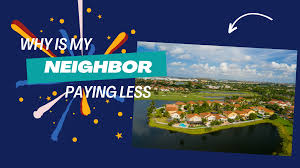
Why Your Neighbor’s Insurance Costs Less Than Yours
You both live on the same street. You drive similar cars. Maybe you even have the same insurance company. So why is your neighbor paying less for the same coverage?
It’s one of the most frustrating questions for policyholders—and one that rarely has a simple answer.
While it might feel unfair, insurance rates are highly personalized. What seems like identical coverage from the outside can vary greatly due to invisible factors you probably haven’t even considered. Here’s a breakdown of why your neighbor’s premiums might be lower than yours—and what you can do about it.
1. Credit Score Plays a Big Role (In Most States)
Yes, your credit score can influence your insurance premiums—even if your driving record or claim history is spotless.
Insurance companies use what’s called an insurance-based credit score to predict how likely you are to file a claim. Statistically, people with lower scores file more claims.
💡 Even a small dip in your credit score can cost you hundreds over a policy term.
2. Claims History: Yours & Theirs
If you’ve filed even one recent claim—auto, home, or otherwise—your risk profile rises. Meanwhile, your neighbor may have gone a decade without filing a single claim.
Insurers see claim-free customers as less risky and reward them with lower rates. Some companies even offer claim-free discounts or accident forgiveness, which your neighbor may qualify for, and you may not.
3. Bundling and Loyalty Discounts
Your neighbor might be getting a multi-policy discount by bundling home, auto, life, or umbrella insurance with the same provider.
-
Discounts for bundling can shave off 10% to 25%.
-
Loyalty or long-term customer rewards can add another layer of savings.
💡 If your policies are spread out across different providers, you could be missing out on serious savings.
4. Policy Customization and Deductibles
Even if the coverage looks the same on paper, small details can drive big differences in price:
-
Your neighbor might have a higher deductible, lowering their premium.
-
They may have fewer add-ons or endorsements.
-
They could have opted out of certain optional coverages that you’re paying for.
💡 One overlooked rider—like roadside assistance or rental reimbursement—could account for the cost gap.
5. Driving Habits & Vehicle Differences
Even similar cars can come with different risk ratings. Factors that matter:
-
Annual mileage – Less driving means less risk.
-
Commute distance – A short local commute is lower risk than highway travel.
-
Safety features – Vehicles with better safety ratings or anti-theft devices often qualify for lower rates.
And if your neighbor drives less aggressively (yes, some companies track this through apps), they might qualify for usage-based insurance discounts.
6. Home Renovations or Upgrades
If your neighbor recently updated their roof, plumbing, wiring, or HVAC system, their home may be considered less risky by insurers—leading to lower homeowner’s premiums.
On the flip side, if you’ve added a pool, trampoline, or home office, your risk might have increased without you even realizing it.
7. Different Insurance Companies, Different Pricing Algorithms
Even if you and your neighbor both use “reputable” companies, insurers use different risk models, pricing tools, and discount formulas.
That means one insurer could see you as high-risk while another sees you as a low-risk customer.
💡 This is why it’s crucial to shop around—loyalty doesn’t always equal savings.
8. Timing Matters
Insurance rates fluctuate based on the market, weather patterns, local crime stats, and even supply chain costs. If your neighbor locked in a rate months before you (or during a slow claim period), they may simply be riding a better cycle.
What You Can Do About It
✅ Ask your insurer for a full policy review
✅ Raise your deductible if it makes financial sense
✅ Improve your credit score
✅ Bundle your policies
✅ Shop other insurers every 1–2 years
✅ Take advantage of discounts you didn’t know existed
✅ Avoid small claims if you can pay out of pocket
Final Thought
It’s easy to assume your insurance rate is set in stone—but that’s rarely the case. There are dozens of invisible factors shaping what you pay.
Your neighbor might just be a better “insurance profile” on paper—not necessarily luckier. But with a little digging and a few smart changes, you might close the gap—or even come out ahead.
Because when it comes to insurance, knowledge really does pay off.
